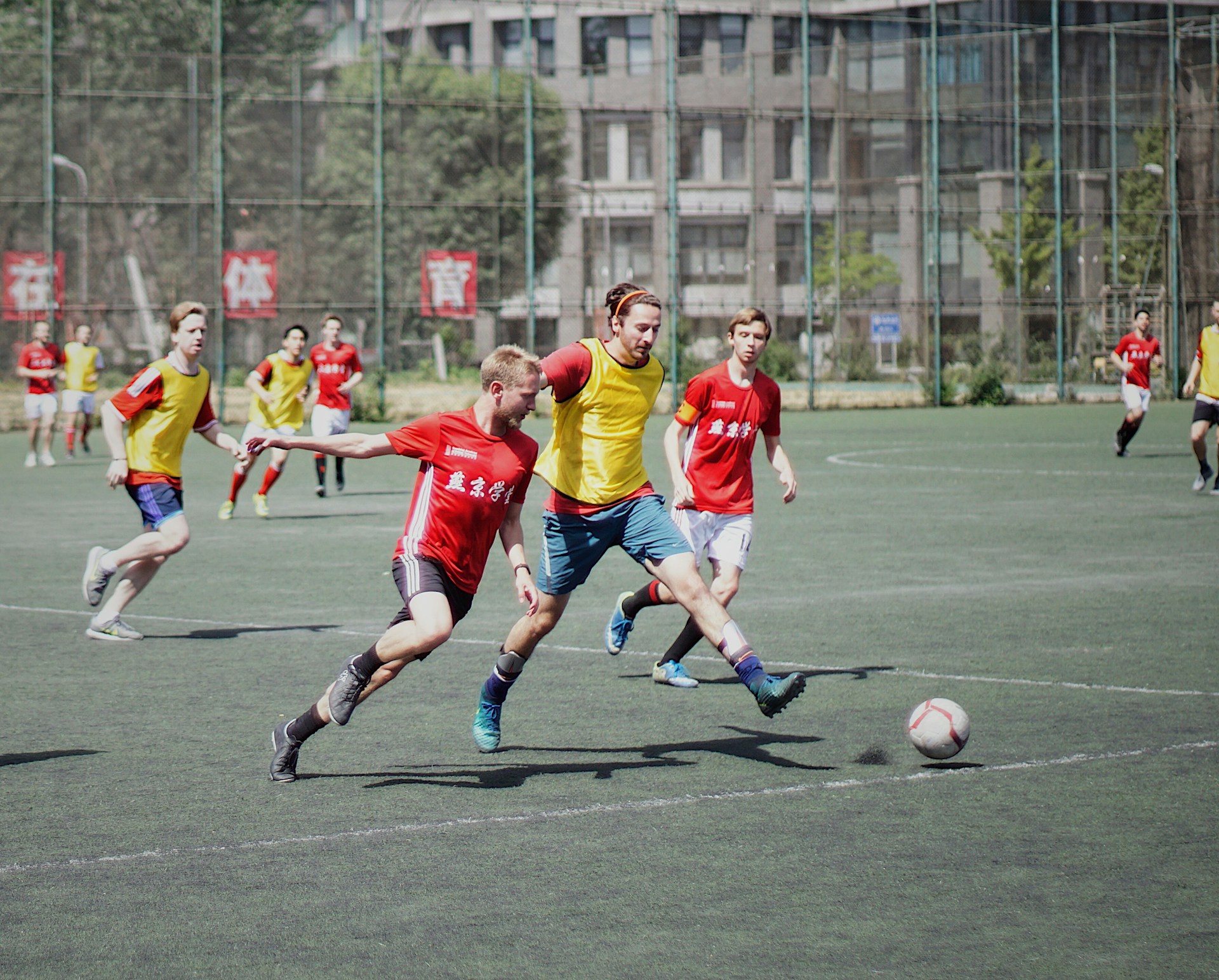Football is a game of speed, where the ability to sprint can make the difference between winning and losing. Whether it’s chasing a loose ball, outpacing an opponent, or closing down space quickly, sprinting is crucial. So, how can football players effectively improve their sprinting techniques? We will delve into various training methods and techniques to enhance sprint performance, focusing on aspects like strength, speed, and agility.
The Fundamentals of Sprint Training for Football Players
To enhance your sprinting abilities, understanding the fundamentals is essential. Sprinting isn’t just about running fast; it’s about mastering the sprinting technique. The drive phase, stride length, and ground contact time are critical components. Proper sprint training can lead to improvements in sprint performance and overall football performance.
Avez-vous vu cela : What are the best practices for football clubs in managing youth talent development?
The Drive Phase
The drive phase involves the initial steps taken after the start of a sprint. During this phase, powerful force is exerted to propel the body forward. This phase is vital for building momentum and achieving top speed. Incorporating resisted sprinting drills, such as using a sled or resistance bands, can help strengthen the muscles involved and improve the drive phase.
Stride Length and Frequency
Stride length and frequency are crucial for maximizing linear speed. Football players need to focus on optimal stride length to cover more ground with each step while maintaining a high stride frequency. Exercises that target strength power and flexibility, such as strength training and plyometrics, can help optimize these aspects.
A lire également : What are the benefits of sports massage for football players and how often should it be done?
Ground Contact Time
Minimizing ground contact time is essential for rapid acceleration and maintaining speed. Drills that focus on quick foot movements and speed training, such as cone drills and ladder drills, can enhance the body’s ability to react swiftly on the field.
Strength and Conditioning for Improved Sprint Performance
Strength conditioning is indispensable for football players aiming to enhance their sprinting abilities. Building strength and power in specific muscles can significantly improve your sprinting performance.
Lower Body Strength
The muscles in the lower body, including the quadriceps, hamstrings, and calves, play a pivotal role in sprinting. Incorporating exercises like squats, deadlifts, and lunges into your training regimen can build the necessary strength and power. Stronger muscles translate to more force generated during each stride, leading to better acceleration and maximal velocity.
Core Stability
A strong core is crucial for maintaining proper sprinting form. Exercises like planks, Russian twists, and leg raises can enhance core stability. A stable core allows for better force transfer from the upper body to the lower body, improving overall sprinting mechanics.
Plyometrics and Explosive Movements
Plyometric exercises, such as box jumps and bounding, focus on explosive power and can significantly improve sprint performance. These exercises train the muscles to exert maximum force in a short period, essential for explosive starts and rapid acceleration.
The Role of Technique in Sprinting Efficiency
Perfecting your sprinting technique is as important as building strength and power. Proper technique reduces the risk of injury and ensures that you make the most of your physical capabilities.
Posture and Alignment
Maintaining proper posture is crucial for efficient sprinting. Your body should be slightly leaning forward, with the head, neck, and spine aligned. This alignment helps to reduce drag and allows for smoother, faster movements.
Arm Movement
Arm movement plays a significant role in sprinting. Your arms should move in a coordinated manner with your legs, driving forward and backward rather than side to side. Proper arm movement helps in maintaining balance and rhythm, contributing to overall speed.
Foot Placement
Proper foot placement can enhance running efficiency and reduce ground contact time. Aim to land on the balls of your feet rather than your heels, as this allows for quicker transitions and less wasted energy.
Speed Endurance and Agility Drills
While top speed is critical, speed endurance and agility are equally important in football. The ability to sustain high speeds over time and change direction quickly can give you a significant edge on the field.
Interval Training
Interval training involves alternating between high-intensity sprints and low-intensity recovery periods. This type of training helps build speed endurance, allowing you to maintain high speeds for longer periods. Incorporate various distances and intensities to keep your body challenged.
Agility Drills
Agility drills, such as cone drills and ladder drills, focus on enhancing your ability to change direction quickly. These drills improve your reaction time and coordination, essential for navigating the dynamic environment of a football game.
Short Sprints
Incorporating short sprints into your training can help improve your acceleration and first-step quickness. These sprints should be performed at maximum effort over short distances, focusing on explosive starts and rapid progression.
Recovery and Nutrition for Optimal Sprinting Performance
Recovery and nutrition are often overlooked but are critical components of an effective sprint training program. Proper recovery allows your muscles to repair and grow, while adequate nutrition provides the energy needed for intense training sessions.
Rest and Recovery
Rest days and recovery techniques, such as stretching, foam rolling, and massage, are essential for preventing injuries and ensuring that your muscles are ready for the next training session. Overtraining can lead to fatigue and decreased performance, so it’s vital to balance intense training with adequate rest.
Hydration
Staying hydrated is crucial for optimal performance. Dehydration can lead to decreased strength, endurance, and coordination. Make sure to drink plenty of water before, during, and after training sessions to keep your body functioning at its best.
Balanced Diet
A balanced diet rich in protein, carbohydrates, and healthy fats is essential for fueling your body and aiding in muscle recovery. Protein is especially important for muscle repair and growth, while carbohydrates provide the energy needed for high-intensity workouts.
In conclusion, improving sprinting techniques for football players involves a multifaceted approach. By focusing on the fundamentals of sprint training, incorporating strength conditioning and plyometrics, perfecting sprinting techniques, and prioritizing recovery and nutrition, football players can significantly enhance their sprint performance. Each aspect, from the drive phase to speed endurance and agility drills, plays a critical role in developing a well-rounded and effective sprinting ability. Remember, the key to success lies in consistent and focused training, allowing you to excel on the football field and gain that competitive edge.






